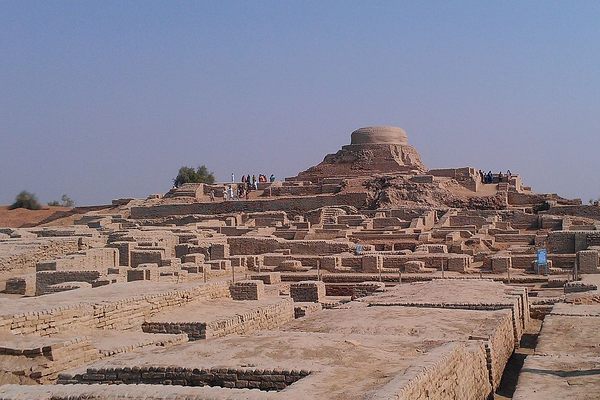Explore the Archaeological Sites of Pakistan
Journey through history at Mohenjo-Daro, Taxila, Harappa, Takht-i-Bahi, and Mehrgarh—ancient sites that showcase Pakistan’s rich civilizations, cultural heritage, and architectural brilliance.
One nation that is well-known for housing archaeological sites all across the world is Pakistan. The image of thousands of years ago is depicted by the remnants of civilizations and their lifestyles. Take a voyage with us on an archaeological adventure to see these words in the context of reality.
Also Read: Discover the Wonders of Balochistan
Here, you can discover Pakistan’s most important archeological sites. Now, let’s get going:
Mohenjo-daro Archaeological Ruins
Located in Larkana, Sindh province, Moenjodaro is an archeological treasure located on the right bank of the Indus River. One of the oldest cities in South Asia, Moenjodaro is 5,000 years old and dates back to the beginning of the third millennium BC. This earliest known urbanized settlement was found in 1922, and in the 1930s, extensive more ruins exploration took place. After 1965, it was decided to halt additional excavation due to the remains’ sensitivity.
Harappa
One of Pakistan’s most well-known archeological sites is Harappa, which is situated in Punjab province 24 kilometers west of Sahiwal City. According to popular belief, the oldest civilizations in the Indus valley were Harappa and Moenjo-daro. Of all the ancient civilizations, Harappa is the most important since its people were more advanced in civilization than others and were the first to attempt reading and writing. The Harappans were accustomed to order and preparation in their daily lives. The impressive infrastructure that attests to their admirable way of life is demonstrated by the remnants of this ancient metropolis. It is a wonder to see the location.
Buddhist Remains in Sahr-i-Bahlol and Takht-i-Bahi’s Neighboring City Ruins
Takht-i-Bahi is a Buddhist monastic structure that dates to the first century BC. The remains are located 16 kilometers from Mardan atop a hill that rises to 152 meters. Peshawar is also able to reach the peak, albeit it is 80 miles away. This Buddhist monastery consists of four groups: a court of stupas, a monastic complex, a temple complex, and a tantric monastic complex.
Taxila
Situated in the Rawalpindi District, Taxila is another outstanding archeological site that dates back to the Gandhara period. The ruins point to Gandhāran city of Taksasila, a prominent Hindu and Buddhist center. It’s noteworthy that for its adherents, it remains a holy and religious site.
Fort Rohtas
The Rohtas Fort is a popular tourist destination, situated approximately 16 kilometers away from Jhelum, Punjab. Sher Shah Suri constructed Rohtas Fort, which is a notable example of Islamic military construction. The plan was to build it on the hillside next to the Kahan River in order to control the Ghakkars.
Monuments of Makli Thatta
Makli is a mecropolis in Thatta, an ancient city of Pakistan. The city’s ruins stretch back to the fourteenth century. The distinctiveness of the architecture created with premium bricks, stones, and tiles supports the high caliber building practices of the time.
Fort and Shalamar Garden, Lahore
Lahore Fort and Shalamar Gardens are two royally constructed complexes in Lahore, Punjab, that are considered masterpieces of the Mughal era. The Fort is now a component of larger Iqbal Park and is situated in the northwest area of the city. The famous Mughal emperor Shah Jahan ordered the construction of the Shalamar Gardens in 1642. Inspired by Islamic and Persian architecture, the gardens cover an area of sixteen hectares.
Kot Diji Fort
The southern region of Khairpur, in the Pakistani province of Sindh, is home to Kot Diji Fort. The Talpur Dynasty rulers of Sindh constructed it between 1785 and 1795. The fort’s massive entry gate is commonly referred to as “Shahi Darwaza,” or the “Royal Gate.” Built on a hill that rises to a height of roughly 110 feet, this fort. The purpose of this fort was to house all the defense-related gear. Three enormous, fifty-foot-tall towers are present. In case of an emergency, cannons were positioned at the summit of these towers to fire at the cannonballs.
Mehrgarh
In Balochistan’s Kacchi Plain, on the western bank of the Indus River, Pakistan lies the ancient archaeological site of Mehrgarh. The residents of Mehrrgarh were among the first to adopt agricultural values. The local population was related to the ancient Harappan Civilization. Numerous clues that pointed to the Harappan way of life were discovered by the archaeologists.
Baltit Fort
The stunning Baltit Fort in the Hunza Valley, Pakistan is a work of art. Building of Baltit Fort dates back around 7000 years. Ladakhi architecture served as an inspiration for Baltit Fort’s distinctive design. A prince from the region married a girl from Baltistan in the sixteenth century. The Balti artisans restored this fort during that period.


Comments are closed, but trackbacks and pingbacks are open.